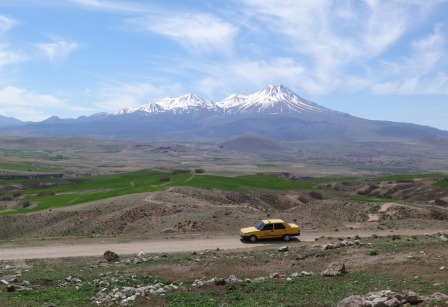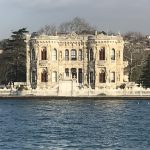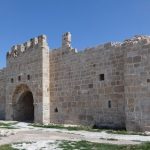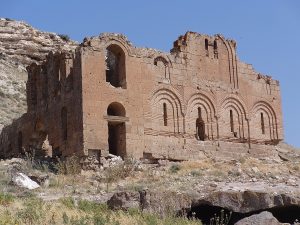 Roughly 15km south of Aksaray, and 4km above the village of Akhisar (“White Castle”) in barren hills overlooking Hasan Dağı (Mt Hasan), the Canlı Kilise is a spectacular ruin, one of very few stone-built churches in Cappadocia, an area generally known for its rock-cut structures.
Roughly 15km south of Aksaray, and 4km above the village of Akhisar (“White Castle”) in barren hills overlooking Hasan Dağı (Mt Hasan), the Canlı Kilise is a spectacular ruin, one of very few stone-built churches in Cappadocia, an area generally known for its rock-cut structures.
In fact before you actually reach it – along an untarmacked road that it would be unwise to try to drive along after heavy rain – you pass a rock-cut settlement not dissimilar to those at Gülşehir (Açık Saray) and Ortahisar (Hallaç Manastır). The most conspicuous remains are of pigeon-houses which presumably once boasted stone facades as they do in Göreme and other Cappadocian settlements. Hidden amid the pigeon houses are several small rock-cut churches whose carved facades signal their presence.
Finally you round a corner and there is the Canlı Kilise, a magnificent building, far larger than the better known Kızıl Kilise, another built church near Güzelyurt.
No one could fail to be impressed by the brick and stone arches that adorn the southern face of the church, although one of its most unusual features is actually what was once a two-storey narthex at the east end. The dome that stood above the nave fell in the 1950s, leaving what look like 19th-century frescoes exposed to the air. 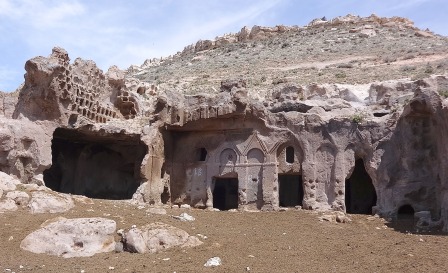
Gertrude Bell came here in 1907 and apparently bitterly regretted that she had only three hours to inspect the site. I had even less. If it’s a nice day come with a picnic and plan to make more of the natural beauty of the setting.
The Byzantine scholar, Robert G Ousterhout, wrote an entire book, A Byzantine Settlement in Cappadocia, about Canlı Kilise and the ruins at Çeltek. In it he suggested that the latter was a residential settlement ,perhaps linked to the Hisn Sinan castle above Akhisar ,rather than a monastery, as is usually claimed.
Aksaray Museum displays the mummified corpses of seven children found nearby during excavations in 1994.
